Nissan Qashqai Review
Nissan Qashqai
Nissan’s breakthrough crossover gets a makeover
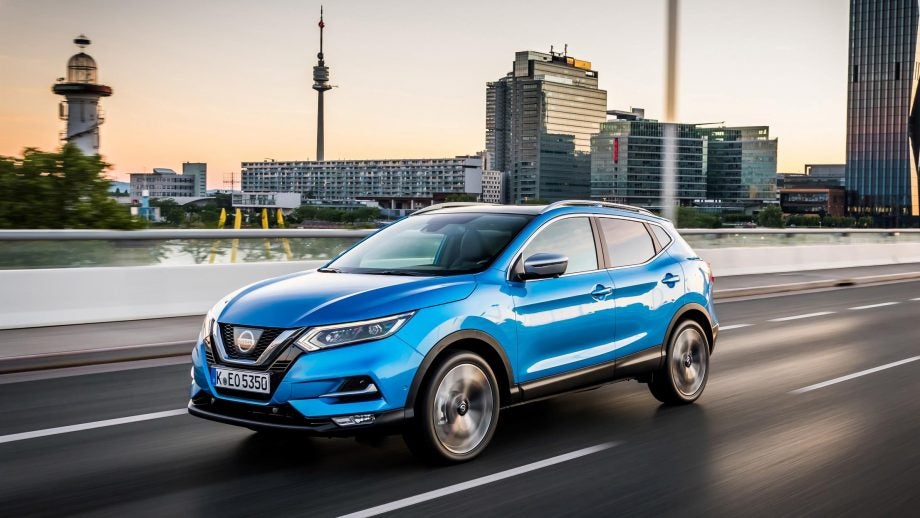
Verdict
Pros
- Expanded product range
- Improved refinement
- Sharper style and more premium look and feel
- Extensive convenience and driver assistance technology
Cons
- Not the most exciting to drive
- Choppy ride on bigger wheels
Key Specifications
- Review Price: £19295.00
- On Tekna and above: Adaptive LED headlights, Intelligent Emergency Braking, NissanConnect touchscreen navigation system, front and rear parking sensors
- 5 seats
- L4377mm x W1806mm wide x H1590mm
What is the Nissan Qashqai?
The Qashqai is the car that created the all-conquering crossover segment – at least according to Nissan. Originally launched 10 years ago, the Qashqai has been a runaway hit with family buyers over two generations. The second generation, launched in 2014, took a more decisive step toward SUV styling but has successfully built on the original’s all-rounder appeal. This update responds to customer demand and is intended to cement the Qashqai’s dominance.
The secret to the Qashqai’s success is offering the things people like in SUVs – increased road presence and a sense of security – but ditching the stuff you don’t need. You can have a four-wheel-drive Qashqai but most are front-wheel-drive, saving weight, improving efficiency, cutting costs and accepting that 4×4 looks are appealing but that few actually need off-road performance.
In the 10 years Nissan has been selling the Qashqai, rivals have been playing catch-up, to the point where there are now more than 20 competitor products on the market. These include the closely related Renault Kadjar, alternatives from Kia and Hyundai in the Sportage and Tucson, and more recent entrants like the SEAT Ateca. Nissan claims not to feel the pressure, though, saying inspiration for this update comes from talking to the 3.3 million customers who have already bought the Qashqai in all its various forms.
Related: How to buy a used car
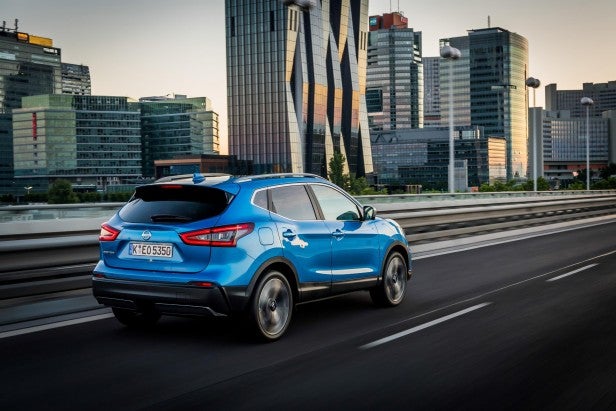
Nissan Qashqai – Models
In response to customer demands for a more luxurious Qashqai, Nissan has added a new range-topping trim level. You start at Visia, hitting the sub-£20K price point but accounting for a tiny fraction of sales. Acenta increases the range of engines available but N-Connecta is the heart of the range. Beyond that you can go for Tekna and the new Tekna+, these models introducing extra kit and a more premium feel.
Petrol engines are branded DIG-T and comprise a 1.2-litre with 113bhp/115ps and a 1.6 with 161bhp/163ps. The most popular engine in the range is the 108bhp/110ps 1.5 dCi diesel, mainly thanks to its 99g/km emissions and 74.3mpg official stats. Above that there’s a more powerful 1.6 diesel with 128bhp/130ps, this being the only engine offered with all-wheel drive. A CVT automatic branded Xtronic is available on the 1.2 petrol and two-wheel drive version of the 1.6 diesel, the Visia and Acenta restricted to the smaller engines while from N-Connecta and up you get the full range.
As it stands the 1.5 dCi diesel would seem to remain the engine of choice, though this may change if diesels fall out of favour with legislators. Nissan has enough petrol-powered alternatives to satisfy demand if that happens, the 1.6 DIG-T combining both the power and refinement to make sense of the Qashqai’s bulk.
Related: Best dash cams
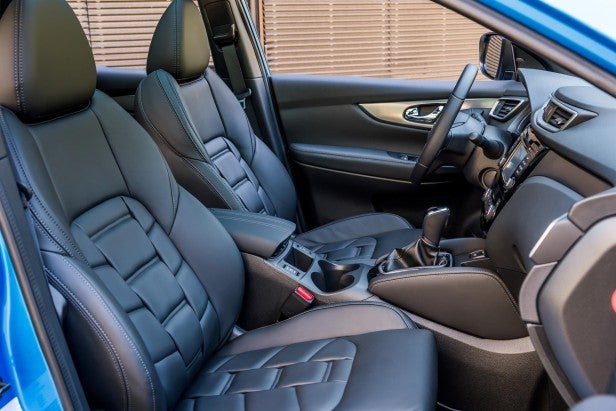
Nissan Qashqai – Interior and styling
The first thing existing Qashqai drivers will notice when they climb into the new one is the fancier D-shaped steering wheel. The flat bottom helps access and the design has been smartened up to contribute to the more premium feeling Nissan is going for throughout the cabin. The rim is thicker – said to improve grip – and the viewing area within it increased for better sight of the instruments.
As you’d expect things get fancier as you progress through the range, Nissan adding details like stitched upholstery on the centre console from Acenta upwards and new ‘monoform’ seats from N-Connecta and beyond. Typical of Nissan’s attention to demands from customers these have more scratch-resistant backings to protect against kids’ feet while the shape improves forward visibility for them too.
Related: Best sat navs
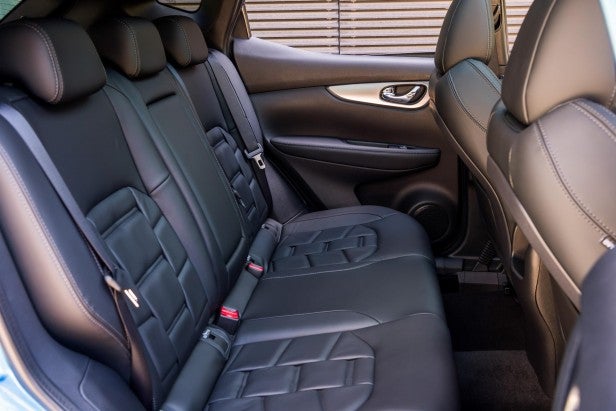
Tekna models get a darker headlining while Tekna+ gets fancy nappa leather upholstery with a unique quilting pattern and pneumatically adjustable lumbar support. By this point the Qashqai’s interior delivers on that premium promise and the design and material qualities are all befitting a price point closing in on £30,000. Overall and for all models the Qashqai’s interior strikes a sensible balance between functional ruggedness and a sense of style.
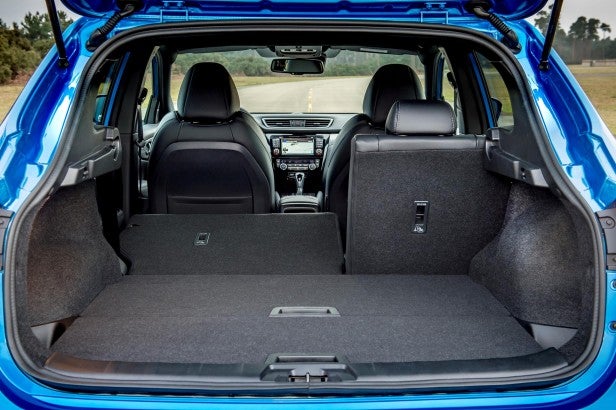
Nissan Qashqai – Boot size
The standard boot space with the seats up on the Qashqai is a useful 430 litres. Nissan is smart enough to realise not all loads will fill that space, while some will exceed it. To help accommodate whatever you’re carrying there’s Nissan’s Flexible Luggage Board System with up to 18 different configurations. Put simply it’s a ‘false floor’ that can conceal a hidden load space for valuables, be adjusted vertically like shelving, or turned vertically to create a divider to stop loose items rattling about.
There are rivals with a bit more space, however, with the SEAT Ateca offering 510 litres in two-wheel-drive form while the Kia Sportage has between 491 and 503 litres depending on the model.
With the seats folded the Qashqai is more impressive, though, with this configuration offering up to 1598 litres of space to accommodate tip runs or bulky items. If this seats-down flexibility matters to you, the Nissan has more space than the 1478 litres of the closely related Renault Kadjar and similar capacity to the Sportage. Again, the Ateca pips the Nissan, although not by as much in this mode.
Nissan Qashqai – Sat-nav and infotainment
As you’d hope for in this day and age, all Qashqais are fitted with DAB radio as standard. The freshly upgraded NissanConnect Evo touchscreen navigation unit is available optionally on Acenta-grade cars for an additional £795, and is standard from N-Connecta models upwards. This accounts for a healthy proportion of the £2125 upgrade price from an Acenta 110 dCi to an N-Connecta with the same engine, especially if you factor in the optional £595 Smart Vision Pack (including Intelligent Emergency Braking, parking sensors and Lane Departure Warning) that are also standard on the latter.
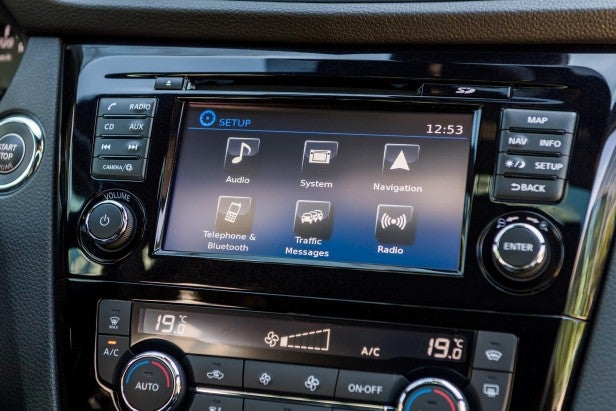
Promising an ‘app like’ interface, the touchscreen selections are intuitive enough, but the surrounding buttons are quite fiddly and hard to use on the move. The graphics, navigation and information are all decent but can’t compete with the fancier offerings from the VW family. The touchscreen interface on the SEAT Ateca is easier to use, while the latest Volkswagen Tiguan has the option of the Active Info Display, which delivers a variety of configurable displays (including navigation) straight into the main instrument binnacle. You pay accordingly, but if you need the latest tech the Qashqai may not be the car for you.
Things are better if you’re a music lover. A new third grade of audio system has been added to the range in the form of an eight-speaker Bose stereo. Standard on Tekna and Tekna+ models, it’s yet another example of Nissan’s stated aim of bringing a premium feel to the Qashqai experience.
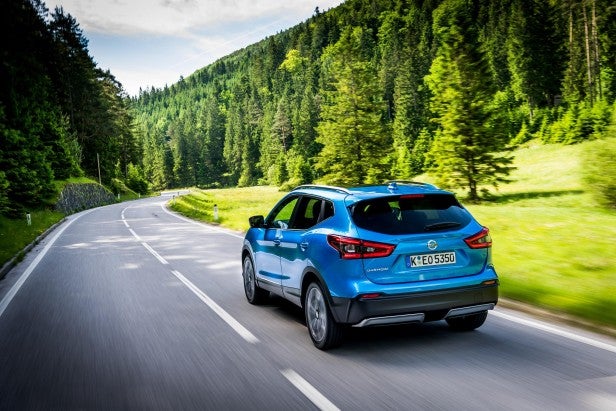
Nissan Qashqai – Driving performance
At face value one Qashqai looks very much like another, but under the skin there are significant variances in the technical spec that go beyond the usual stuff of engine and gearbox choice.
The easy stuff first… Most models are front-wheel drive and use a six-speed manual gearbox. This gets the job done but is quite long of throw and not to be rushed. The XTronic option is a CVT-type gearbox which, in theory, can prove a little slushy compared with regular automatics or the dual-clutch ones used by Volkswagen and its sister brands. In practice it’s unobtrusive and smooth, though the safety release button on the shifter is a little uncooperative if you try and rush the shift from P to D at the lights. It’s available on the 1.2 DIG-T petrol or 1.6 dCi diesel only.
The suspension gets more sophisticated as you progress up the range too. The differences between a basic twist beam rear axle and the fancier multi-link set-up fitted to 1.6 DIG-T petrol versions – plus all AWD variants – may be lost on all but wannabe road testers. But it’s welcome if ride comfort is important to you. If you’re not sure if the car has it, you’re going to need to look underneath. Fancy 19-inch wheels on Tekna and Tekna+ models are best avoided unless you put pose value before comfort – 18-inch wheels are a no-cost ‘downgrade’ worth considering.
No Qashqai is what you’d call fast and the character of the car is slow and steady, characterised by low-geared steering that requires a fair bit of arm twirling in low-speed corners. The 1.6 petrol and diesel models are better suited to those racking up motorway miles, the 1.5 diesel is the best if you’re watching those numbers, while the 1.2 petrol will be adequate if your driving rarely takes you out of town.
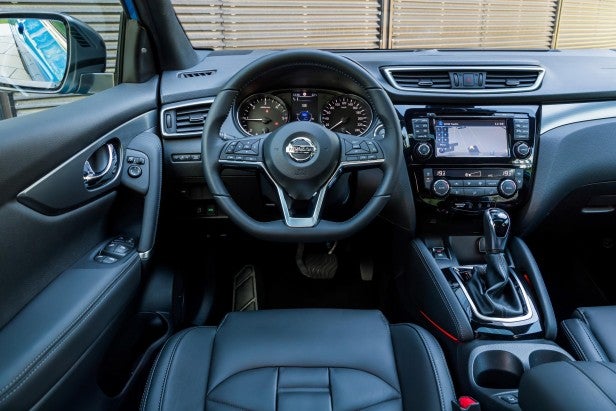
Nissan Qashqai – MPG
The differences between claimed fuel consumption conducted in laboratory tests and the reality out on the road are well documented. The official numbers do, of course, have a big bearing on running costs in terms of tax, though, and as such the 1.5 dCi diesel is a clear winner with its 99g/km and 74.3mpg. Few rivals can offer anything close, the Renault Kadjar fitted with the same engine being one of them. Impressive figures for such a large vehicle.
If you measure your running costs at the pump rather than a spreadsheet and rack up the miles you might actually find the more powerful 1.6 dCi does better, whatever the numbers say. Bear in mind XTronic automatics and the all-wheel-drive version carry with them penalties – two-wheel drive and manual are the best bets if you’re looking to keep running costs down.
Should you be buying a diesel? It’s been dominant in the class and Nissan isn’t calling it either way, but with the 1.2 and 1.6 DIG-T petrols you at least have the choice, with these probably the better option unless you’re doing big miles.
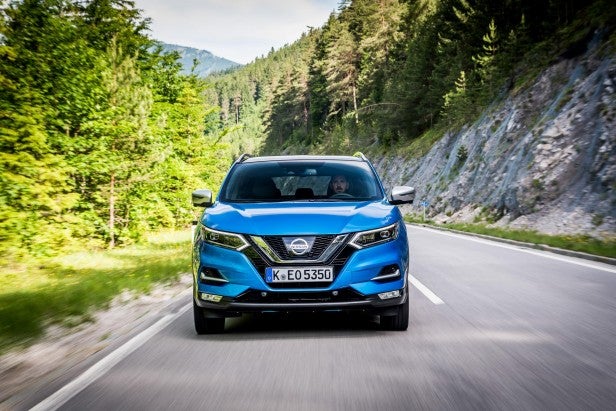
Why buy the Nissan Qashqai?
Given the competitiveness of the class, it’s safe to say there are no really awful choices. Meaning much of the decision process will come down to more emotive factors like brand, styling and equipment levels. And in all those areas the Qashqai is a very strong product. People love the way it looks, the improvements to the interior make it feel like a higher-quality product, and it’s competitive on space and practicality, which family buyers demand.
It’s to Nissan’s credit there’s so much choice in the Qashqai range, but it can also be confusing if you’re not entirely sure what you want. It shares the platform, engines and much else with the Renault Kadjar, which helps to offer some context. So, if we take the core Qashqai – the 1.5 dCi 110 N-Connecta at £25,555 – and compare it with the Dynamique S version of the Kadjar with exactly the same engine and a slightly better spec, you’ll see the Nissan is nearly £1500 more expensive. A 1.7-litre diesel Kia Sportage KX-2 with standard navigation, parking sensors and lane-keep assist is just £22,745. Even the all-new SEAT Ateca in 1.6 TDI diesel form and comparable SE Technology trim is £24,330.
List prices are just part of the buying equation these days, of course. But it’s clear Nissan feels sufficiently confident in the Qashqai’s desirability and dominance in the sector to charge something of a premium. Subjectively that may be fine for you; objectively for all its enviable qualities you may find your money goes further with some of the rivals.
Related: Land Rover Discovery Sport deals
Verdict
The class-leading crossover emerges from a mid-life refresh with a more premium feel and a wider range of toys, underpinned by the same style and practicality.


